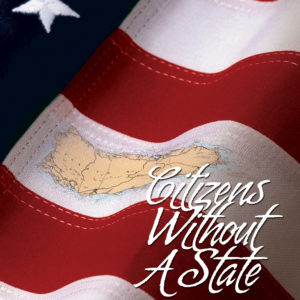Texas, like Puerto Rico and quite a few other states, was once a colony of Spain. Specifically, Texas was part of Mexico when it was a colony of Spain. In the 1820s, Mexico, including Texas, gained independence from Spain and welcomed U.S. settlers. The U.S. settlers were happy to oblige, and quickly outnumbered the previous population. The interests of the new settlers came into conflict with the interests of the former colonial population. Mexican troops clashed with the settlers, and these conflicts led to rebellion.
In 1836, Texans declared independence from Mexico and styled themselves The Republic of Texas. They elected Sam Houston their president.
But there were also Texans who wanted to become a State of the Union. In fact, voters in a referendum that year voted overwhelmingly for statehood. Texas was worried that they woudn’t be able to stand against Mexico, which refused to accept independence for Texas. Great Britain was interested in Texas, too — they didn’t want to take over Texas, but they did want to make sure that they benefited from the new nation that was prepared to block the United States from taking over the West. Texas felt threatened, and they thought they’d like to have the strength of the United States on their side.
Before Texas, a number of territories had requested statehood and– sometimes after much struggle — become states. But Texas was not a territory. Texas had declared independence from the new nation of Mexico, and now it wanted to join the United States.
Other U.S. states had flirted with independence, but this was the first sovereign nation that wanted to become a state.
The Republic of Texas
Texas declared independence, but Mexico didn’t agree. Texas also voted for statehood, but the U.S. Congress didn’t accept the request. The Congress didn’t want to take on a state that was still being claimed by another nation. They also worried that admitting Texas, where slavery was legal, would upset the delicate balance between slave states and free states. Nowadays, we find this idea of balancing between two important ideas strange. It would be like having gun control states and gun-free states, and making sure the Congress was evenly divided between the two. In the run up to the Civil War, though, this was how the division over slavery in the U.S. was handled.
Some people talk about statehood as the “annexation” of Puerto Rico. This is not accurate, since Puerto Rico already belongs to the United States. But Texas did not belong to the U.S., so annexation was the path to statehood for Texas. President Tyler of the United States tried to negotiate annexation with President Houston of the Republic of Texas, without success. Then Mexico, in a deal with Great Britain, offered to recognize the Republic of Texas as long as Texas didn’t accept annexation. Seeing that their choices had come down to statehood or independence, Texas held a vote between those two options. Texas chose statehood.
Texas was accepted as a state by Congress in late December of 1844 and became a state in 1845. From 1846 through 1848, the United States and Mexico fought a war over the new state. In 1848, Mexico relinquished its claim to Texas, as well as some other land along the border. The new border was set at the Rio Grande, rather that at the river Nueces, as Mexico had demanded.
Statehood for Texas
Texas welcomed new immigrants from Europe, and grew and prospered as a state. There were plenty of conflicts, however, including plans by Texas to take over the territory of New Mexico. Texas allowed votes only for white men. And there were still some scuffles with Mexico. In 1850, the federal government agreed on a compromise with Texas as they admitted California as a state. Just ten years later Texas seceded with the Confederacy at the beginning of the Civil War.
Some people look at Puerto Rico today and suggest that, between fiscal crisis and the destruction of Hurricanes Irma and Maria, things are just too tough for statehood. History shows otherwise. Texas was in the middle of a war when they first asked for statehood, and they brought the United States into a war when they became a state. For a variety of reasons, the people of Texas and the Congress of the United States could see that Texas would be better off as a state, and that the U.S. would be better off with Texas.
The relationship hasn’t always been easy, but statehood gave Texas the sovereignty they wanted — and couldn’t get — as a nation. Texas is now the second largest state in the Union.







No responses yet